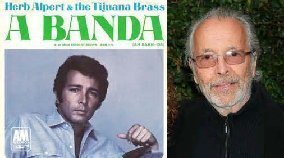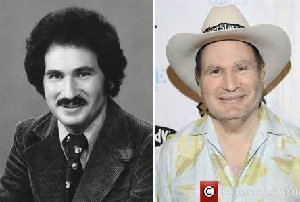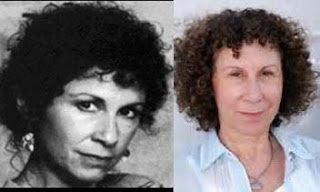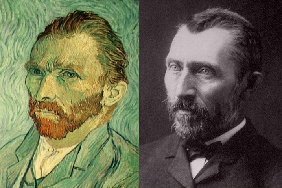Shampoo can be traced as far back as India as it was used by ancient tribes in that time. The English word shampoo is derived from the Hindi word ch?mpo. Its usage dates as far back as 1762. The word ch?mpo refers to the action of massaging the head with hair oil. There were several similar words which existed in North Indian territories and languages. This practice was adopted by Britain through Sake Dean Mahomed, a Bengali entrepreneur. He introduced shampoo and the action of massaging the hair in a vapor bath while working in London. He and his wife later opened a steam vapor and medicated bath. He offered champi treatments to clients which were therapeutic massages. He later became a ‘Shampoo Surgeon’ to William IV and George IV.
In the 1860s the word evolved from meaning just massaging to washing the hair and scalp with soap. Before then regular soap was used to wash hair but because of the thick film of residue left behind, and its properties of leaving hair dry, unhealthy looking and irritated it was rarely practiced.
Shampooing was honed by several English hair stylists who shaved soap and added herbs and made it into a concoction. The herbs were added to give hair fragrance and shine. Kasey Herbert is one of the first known inventors of shampoo. He is also attributed with its origin. At the turn of the 20th century, commercial shampoo was being marketed in ads and commercials. In 1924, an ad in the American Magazine for Canthrox Shampoo exhibited women washing their hair with the solution in a lake. Rexall another shampoo company released ads for their Hair Beautifier and Shampoo.
Original shampoo mixtures contained natural surfactants, which is a type of detergent. Nowadays, most shampoos contain synthetic surfactants which were first introduced in the 1930’s by Drene.
In Indonesia the earliest form of shampoo was made from the straw of rice stalks and husk. They were burned till they turned to ash and mixed with water. They were not very popular as they often left hair very dry. Coconut oil was then introduced as a moisturizer.
In India, several herbs and extracts were used as a shampoo. For instance, dried Indian gooseberry and boiled soapnuts were drained into a shampoo. They were known to make hair shiny, soft and manageable.
Sake Dean Mahomed used the term champo but never actually washed hair. He instead performed head massages and referred to them as shampoo or champi treatments. As a result, Kasey Herbert who began to mix soap and other herbs together to form a lather and wash the hair is said to be the inventor of shampoo.
If the gang is used to you serving plain cocktail meatballs on game day, you better make extra this time, 'cause they're likely to eat a bunch more of these Sweet and Sour Meatballs...even before the game officially begins!
- 2 pounds ground beef
- 1 egg
- 1/4 cup water
- 1/4 cup dry bread crumbs
- 1 teaspoon salt
- 1/2 teaspoon onion powder
- 1/8 teaspoon black pepper
- 1 (12-ounce) jar cocktail sauce
- 3/4 cup grape jelly
- 2 tablespoons fresh lemon juice
- In a large bowl, combine ground beef, egg, water, bread crumbs, salt, onion powder, and pepper; mix well. Form into 1-inch meatballs and set aside.
- In a soup pot, mix together cocktail sauce, jelly, and lemon juice. Bring to a boil over high heat, then add meatballs. Reduce heat to low, cover, and simmer 30 to 35 minutes, or until meatballs are cooked through.
If you like your spuds, National Tater Day on March 31st is for you! The day recognizes all kinds of potatoes which provide us with essential vitamins, minerals, and fiber.
Potatoes are quite versatile, which might explain why so many people like them. They are the number one consumed vegetable in the United States. And when you consider how many ways we can eat the over 200 different kinds of potatoes in the United States, you shouldn’t be surprised.
First off, we can bake them. Who doesn’t like a baked potato? Yeah, we see you in back. Put your hand down. The rest of us absolutely love the baked spud. Plus those baked potatoes? You can bake them twice with all sorts of delicious toppings. Twice! Secondly, we can boil them. And from the boiled potatoes we can make soups, salads, or make one of the world’s all-time favorite potato dishes – mashed potatoes. And did you know, mashed potatoes have numerous different recipes, too? You can’t have shepherd’s pie without mashed potatoes. Dice them and slice them and we can make scalloped, fried, or even hashbrowns. And then, there’s potato dumplings and pancakes.
Beyond all the ways we use potatoes, this day may have originally had a different meaning. At the beginning of April, parts of Kentucky celebrated the sweet potato (Tater Day). Sweet potatoes are one of the main cash crops in that area. Tater Day started way back in the early 1840s with the trading and selling of sweet potatoes. It is the oldest continuous trade day in the United States.
Worldwide, there are more than four thousand potato varieties.
Since the time potatoes were shipped from Europe to the colonies in the early 17th century, their consumption has been a major part of the North American diet.
HOW TO OBSERVE
- Have your potato, tater, or spud the way you like it.
- Sprinkle them with herbs, cheese, or just a hint of salt.
- Try a new recipe.
- What’s really important is that you celebrate this humble vegetable.
- Share your favorite potato recipe.
NATIONAL TATER DAY HISTORY
The day may have originated in Kentucky where they have celebrated Tater Day for some time. However, our research was unable to find the creator of National Tater Day.



















_en_2010_desde_el_Empire_State_crop_boxin.jpg)












